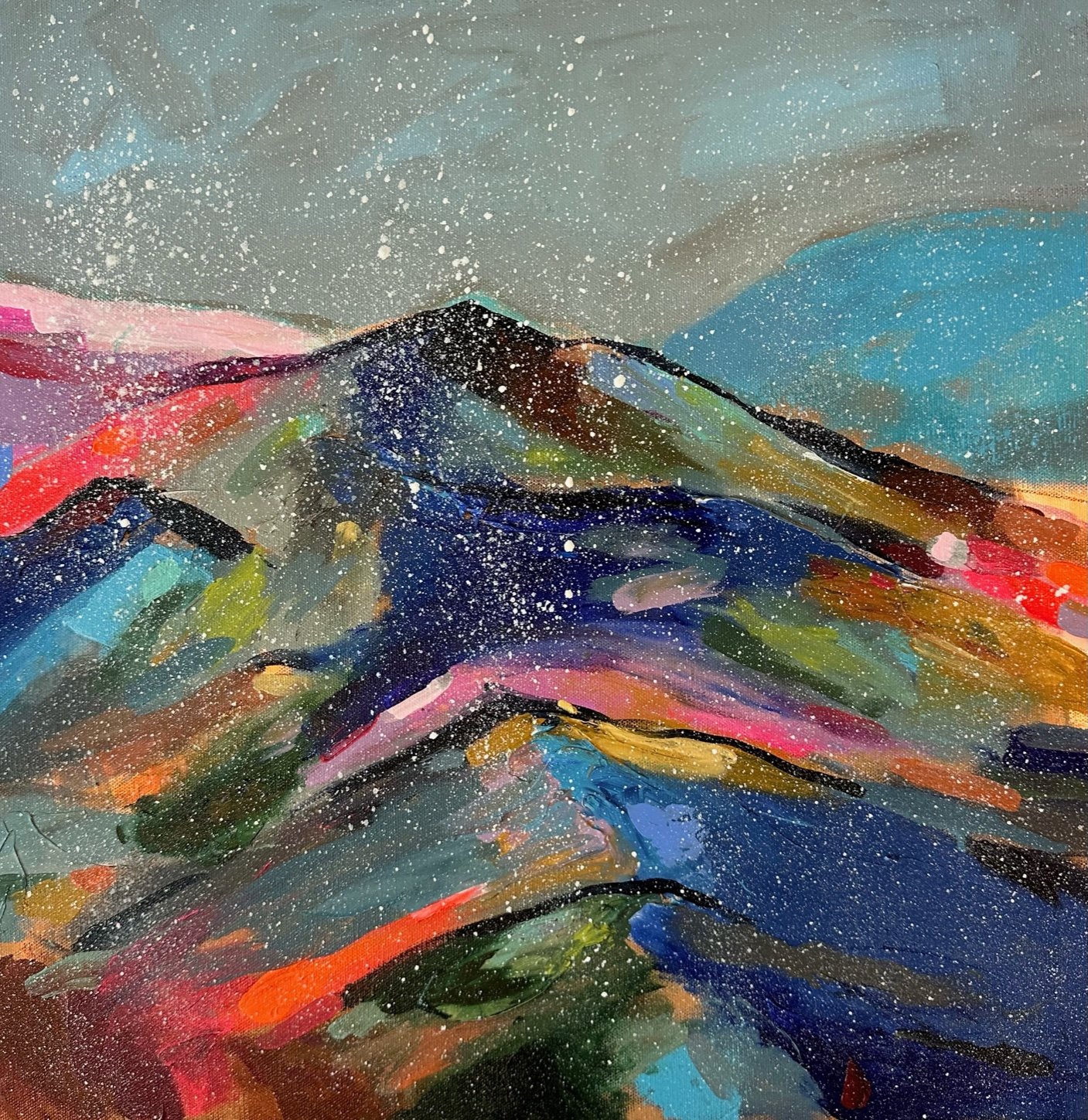The demolition of The Pink House in Newbury, Massachusetts is said to be imminent. Everyone who cares about the iconic Pink House surrounded by the beautiful marshes of Newbury needs to do their part to stop it. Local artists Tina Rawson and Rebecca Klementovich are asking everyone to try to stop it by wielding their paintbrushes and adding their voices to the many who wish to save The Pink House.
The Pink House has captured the imagination of many. It is visually arresting, looking good in every season and in all weather. It stands alone surrounded by marshes that shift with the season, its pink color stands out against the sky and its silhouette is noticeable from afar, even at night. Visual artists such as Klementovich, Rawson and many others paint it and are able to then sell those paintings and cards or posters made from them. Many printmakers, photographers, and even oyster shell ornament makers have created works of art about this iconic place. People love The Pink House art.
It won the most Instagramable spot a couple of years on the North Shore of Boston. Diana Di Zoglio, State Senator states:
"The Pink House is a local treasure and landmark that brings great beauty, history and culture to Plum Island, attracting locals, visitors and tourists alike. I am committed to working alongside our local, state and federal partners to ensure this beloved landmark is preserved for future generations to cherish."
The refuge is managed by Matt Hillman. The Town of Newbury Select Board, The Newburyport City Council, The Salisbury Select Board, and the Amesbury City Council have all voted to urge FWS to continue to look for solutions instead of demolishing The Pink House. Support the Pink House, Inc., a non-profit group, 501(c)(3), has been working diligently for eight years to save The Pink House and has ideas on how to save it.
There is a myth that people love, that The Pink House was a spite house. It actually wasn't, but the thought that it had been built for a jilted wife out of spite caught people's attention. In 1925, The Pink House was bought by Gertrude W. Cutter from the widow Abbie K. Little. Fast forward, in 2011 it was purchased by the U.S. Fish & Wildlife/Parker River National Wildlife Refuge with the surrounding acreage. You can read the complete history here. The Pink House is owned by the Fish and Wildlife (FWS) which Hillman manages on just over a one-acre lot. Now they want to tear it down. But they will exchange it for land, so please reach out if you have some that you would like to sell near a refuge or flood zone.
Please join us in our wish to preserve The Pink House. LET YOUR VOICE BE HEARD
Email Congressman Seth Mouton and Matt Hillman at parkerriver@fws.gov
You can also reach out to Senator ED Market, and Senator Elizabeth Warren and Governor Healy in Massachusetts.Tell them why The Pink House should be saved. Read more at https://www.supportthepinkhouse.com and if you have land to sell or trade please contact Support the Pink House at info@supportthepinkhouse.com
In order to learn more about the artists visit tinarawsonart.com and klementovich.com, or write tina.rawson@gmail.com or Rebecca Klementovich at rklementovich@yahoo.com. We hope that fellow artists and others who enjoy The Pink House and its beauty will help stop the demolition.










